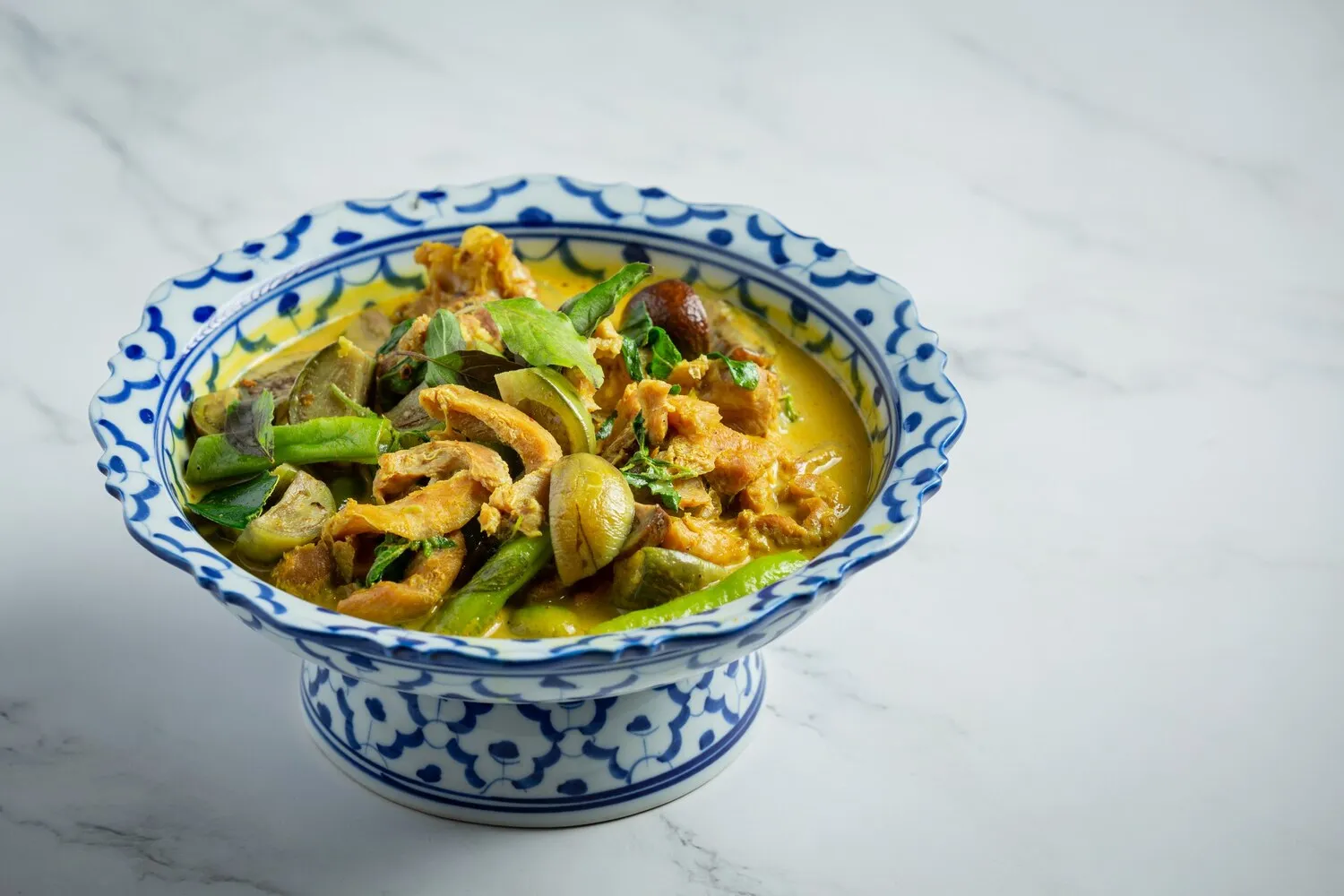
Green Curry
Thai green curry with coconut milk, bamboo shoots, bell peppers, and your choice of protein (chicken, beef, tofu, or vegetables).
Nutrition Facts
* The % Daily Value (DV) tells you how much a nutrient in a serving of food contributes to a daily diet. 2,000 calories a day is used for general nutrition advice.
Thai cuisine has been influenced by neighboring countries like India, China, Malaysia, and Burma. Green curry's development reflects this blend, incorporating spices and techniques while adapting to locally available ingredients. The use of coconut milk, a key ingredient, is believed to have been adopted from Southern Thailand where coconuts are abundant.
Green curry is a staple dish in Thai cuisine, commonly enjoyed in homes and restaurants. It reflects the Thai emphasis on balanced flavors and the use of fresh ingredients. The dish is often shared communally, emphasizing the importance of togetherness in Thai culture.
Ingredients' Significance
Each ingredient holds symbolic value in Thai culture. For example, chilies represent strength and passion, while coconut milk signifies prosperity and abundance.
Family Meal
Green curry is often prepared and shared amongst family members, showcasing the values of community and familial bonds.
Restaurant Status
Green curry is found on nearly every Thai restaurant menu worldwide, representing the culinary identity of Thailand.
Green curry boasts a complex flavor profile characterized by a balance of spicy, sweet, savory, and creamy notes.
The primary flavor comes from the green curry paste, which is made with fresh green chilies, lemongrass, galangal, kaffir lime leaves, coriander root, cumin, garlic, shallots, and shrimp paste. The coconut milk adds richness and sweetness, while fish sauce provides umami and saltiness. The vegetables, like bamboo shoots and bell peppers, contribute texture and subtle sweetness. Protein like chicken or tofu absorbs the flavors of the curry, adding to the overall complexity. Sugar is often added to balance the spiciness and enhance the other flavors.
Quality of Green Curry Paste
Using a high-quality green curry paste is crucial for authentic flavor. Freshly made paste is best, but good quality store-bought pastes are acceptable. Adjust the amount of paste to control the spiciness.
Coconut Milk Consistency
Use full-fat coconut milk for a richer and creamier curry. Start with the thick cream at the top of the can to fry the curry paste, which helps release its aromas.
Balancing Flavors
Taste and adjust the seasoning throughout the cooking process. Balance the spiciness with sweetness (sugar or palm sugar), the saltiness with fish sauce, and the sourness with lime juice or kaffir lime leaves.
Vegetable Preparation
Cut the vegetables into uniform sizes for even cooking. Add softer vegetables, like bell peppers, later in the cooking process to prevent them from becoming mushy.
Protein Handling
If using chicken or beef, sear the meat before adding it to the curry to lock in moisture and enhance flavor. Tofu should be pressed to remove excess water before cooking.
Explore additional Curry dishes and restaurants
Explore CurryDiscover top dining spots and culinary experiences in Uppsala.
Explore UppsalaLearn more about the food culture, restaurant scene, and culinary heritage of Sweden.
Explore Sweden